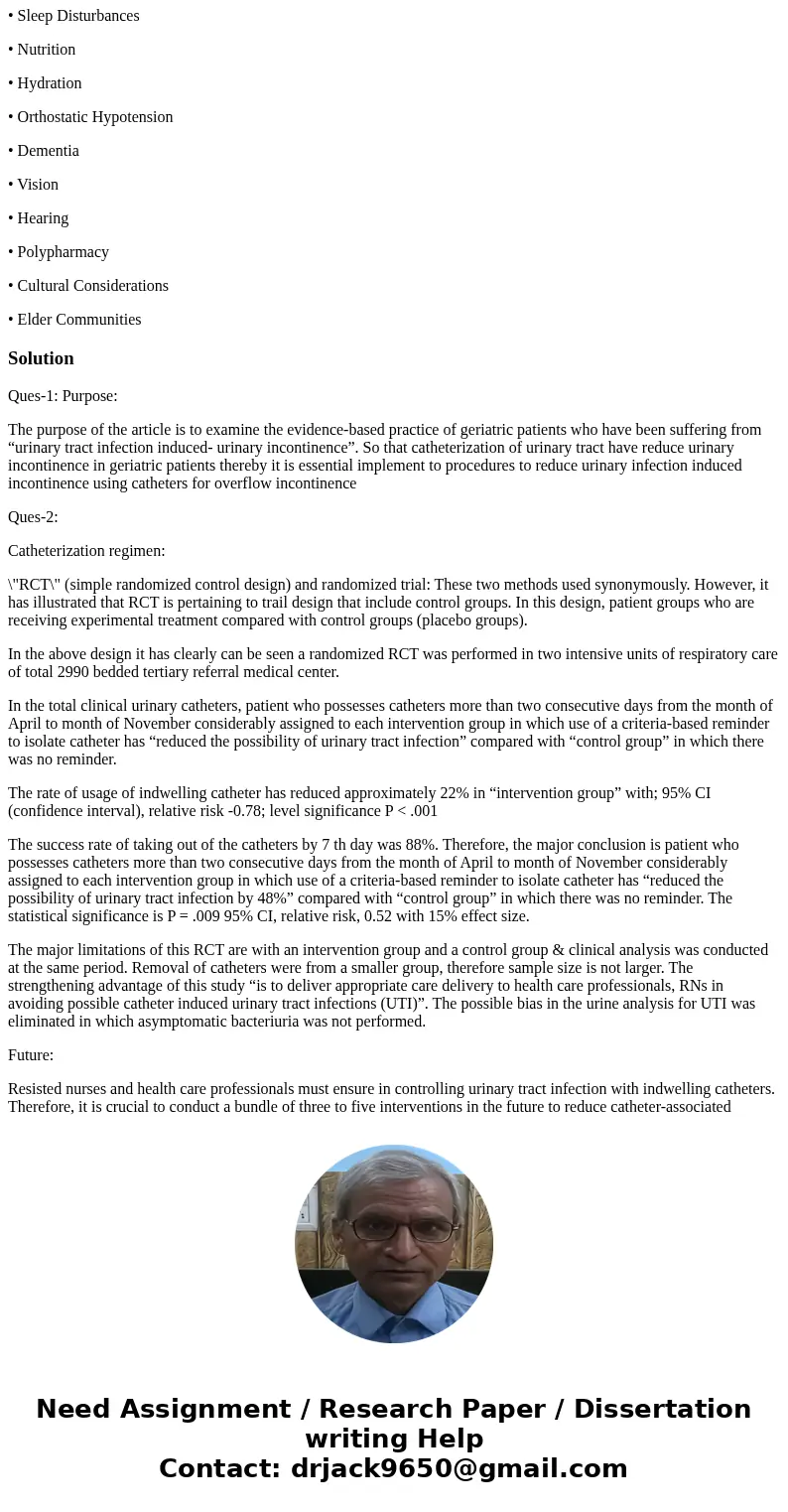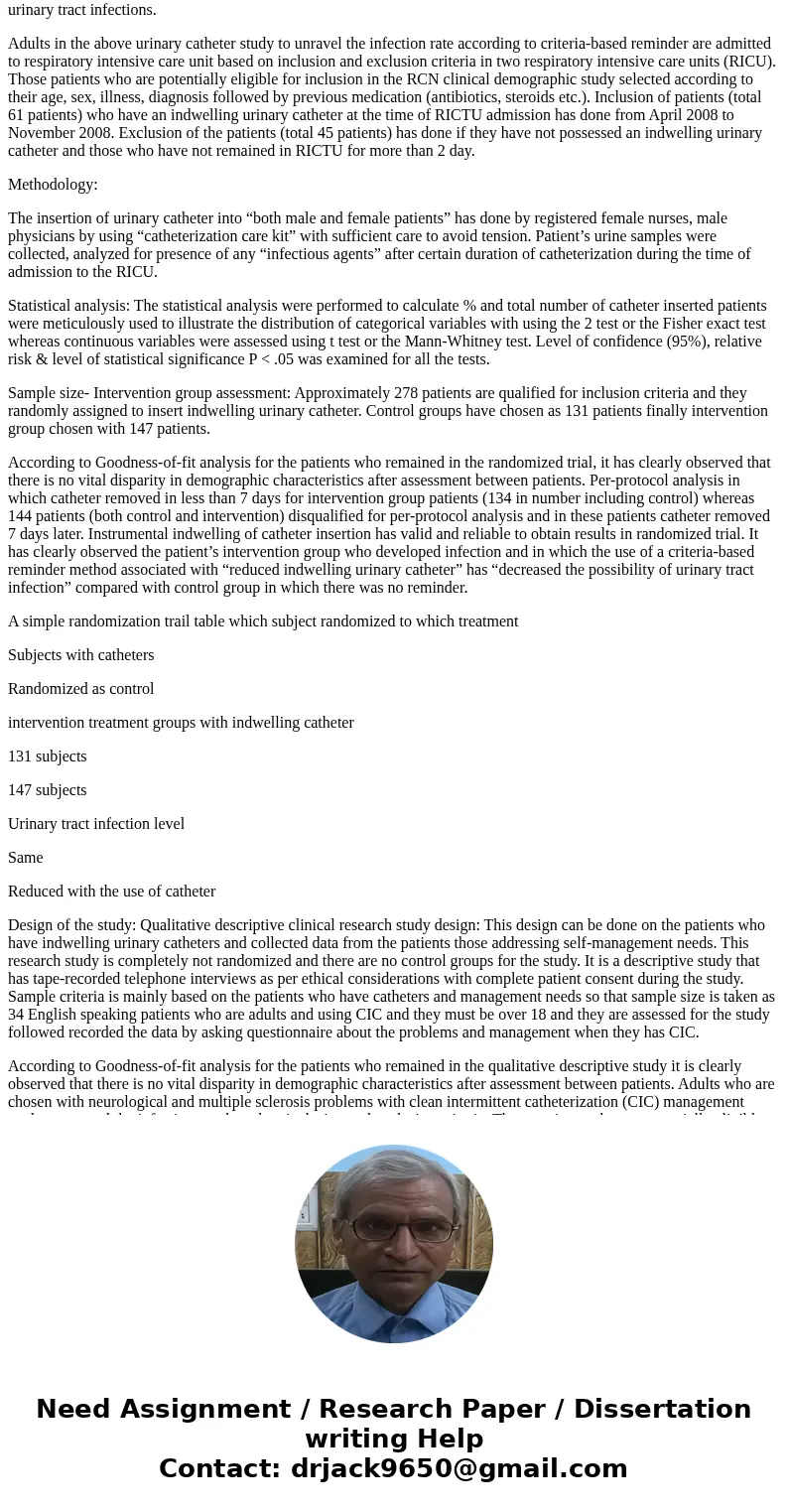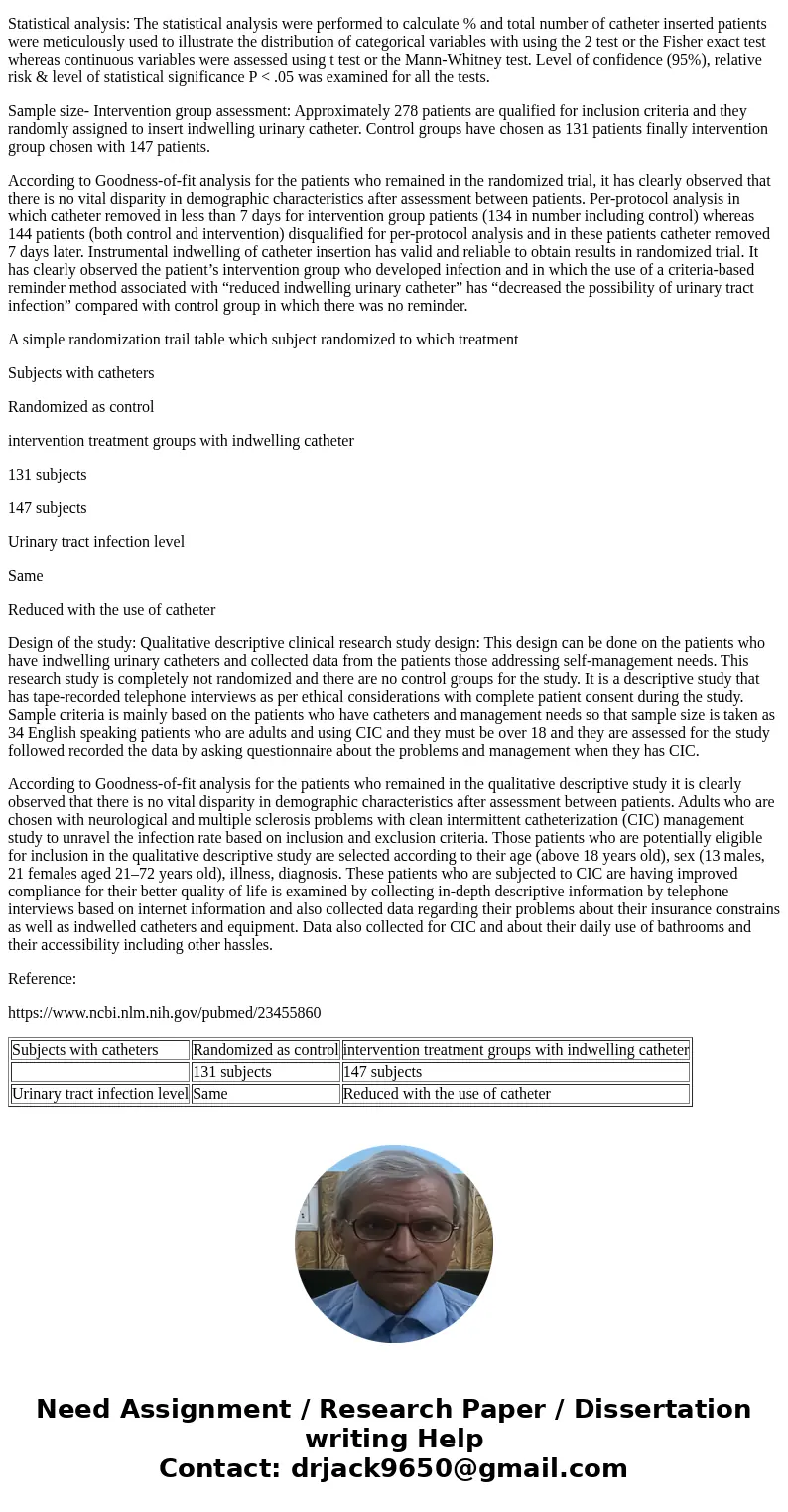class GERONTOLOGICAL NURSING Journal Article Summary Assignm
class GERONTOLOGICAL NURSING
Journal Article Summary Assignment:
The purpose of the journal article summary assignment is for students to improve their
knowledge of evidence-based geriatric nursing practice and evidence-based protocols.
Students will review evidence-based literature and reflect on how the literature impacts
their professional nursing practice. Students will summarize two articles published in a
peer-reviewed journal within the last 10 years. The journal articles must address the
geriatric population. Topics will be chosen from the provided list (unless prior approval is
given), and the topic may not be repeated on the two journal article summaries. The
student should summarize each article and discuss how the findings are significant to
clinical practice. Article summaries should use APA format (double spaced, but no cover
page) and should be no more than 3 pages. The two article summaries are 10% of the total
class grade (2 x 5%).
Journal summaries should use the following format:
• Purpose: Describe the purpose of the article/study.
• Strength of Evidence: Identify the type of evidence used to support the findings, and
the strength of the evidence. If the article is based on research, describe the study
design, setting, subjects, and sample size.
• Results: Summarize the findings of the study.
• Limitations: Identify study limitations that may weaken evidence or limit
generalizability.
• Significance: Describe how the findings are significant to geriatric nursing practice.
Do the findings represent a change in practice and how do the findings inform your
nursing practice (what did you learn)?
Topics for journal article summaries and class presentations choose one of those topic and APA styles
• Pain
• Heart Failure
• Stroke
• Substance/Alcohol Abuse
• Urinary Incontinence
• Sexuality Issues
• Frailty/Fall Risk
• Iatrogenesis
• Sleep Disturbances
• Nutrition
• Hydration
• Orthostatic Hypotension
• Dementia
• Vision
• Hearing
• Polypharmacy
• Cultural Considerations
• Elder Communities
Solution
Ques-1: Purpose:
The purpose of the article is to examine the evidence-based practice of geriatric patients who have been suffering from “urinary tract infection induced- urinary incontinence”. So that catheterization of urinary tract have reduce urinary incontinence in geriatric patients thereby it is essential implement to procedures to reduce urinary infection induced incontinence using catheters for overflow incontinence
Ques-2:
Catheterization regimen:
\"RCT\" (simple randomized control design) and randomized trial: These two methods used synonymously. However, it has illustrated that RCT is pertaining to trail design that include control groups. In this design, patient groups who are receiving experimental treatment compared with control groups (placebo groups).
In the above design it has clearly can be seen a randomized RCT was performed in two intensive units of respiratory care of total 2990 bedded tertiary referral medical center.
In the total clinical urinary catheters, patient who possesses catheters more than two consecutive days from the month of April to month of November considerably assigned to each intervention group in which use of a criteria-based reminder to isolate catheter has “reduced the possibility of urinary tract infection” compared with “control group” in which there was no reminder.
The rate of usage of indwelling catheter has reduced approximately 22% in “intervention group” with; 95% CI (confidence interval), relative risk -0.78; level significance P < .001
The success rate of taking out of the catheters by 7 th day was 88%. Therefore, the major conclusion is patient who possesses catheters more than two consecutive days from the month of April to month of November considerably assigned to each intervention group in which use of a criteria-based reminder to isolate catheter has “reduced the possibility of urinary tract infection by 48%” compared with “control group” in which there was no reminder. The statistical significance is P = .009 95% CI, relative risk, 0.52 with 15% effect size.
The major limitations of this RCT are with an intervention group and a control group & clinical analysis was conducted at the same period. Removal of catheters were from a smaller group, therefore sample size is not larger. The strengthening advantage of this study “is to deliver appropriate care delivery to health care professionals, RNs in avoiding possible catheter induced urinary tract infections (UTI)”. The possible bias in the urine analysis for UTI was eliminated in which asymptomatic bacteriuria was not performed.
Future:
Resisted nurses and health care professionals must ensure in controlling urinary tract infection with indwelling catheters. Therefore, it is crucial to conduct a bundle of three to five interventions in the future to reduce catheter-associated urinary tract infections.
Adults in the above urinary catheter study to unravel the infection rate according to criteria-based reminder are admitted to respiratory intensive care unit based on inclusion and exclusion criteria in two respiratory intensive care units (RICU). Those patients who are potentially eligible for inclusion in the RCN clinical demographic study selected according to their age, sex, illness, diagnosis followed by previous medication (antibiotics, steroids etc.). Inclusion of patients (total 61 patients) who have an indwelling urinary catheter at the time of RICTU admission has done from April 2008 to November 2008. Exclusion of the patients (total 45 patients) has done if they have not possessed an indwelling urinary catheter and those who have not remained in RICTU for more than 2 day.
Methodology:
The insertion of urinary catheter into “both male and female patients” has done by registered female nurses, male physicians by using “catheterization care kit” with sufficient care to avoid tension. Patient’s urine samples were collected, analyzed for presence of any “infectious agents” after certain duration of catheterization during the time of admission to the RICU.
Statistical analysis: The statistical analysis were performed to calculate % and total number of catheter inserted patients were meticulously used to illustrate the distribution of categorical variables with using the 2 test or the Fisher exact test whereas continuous variables were assessed using t test or the Mann-Whitney test. Level of confidence (95%), relative risk & level of statistical significance P < .05 was examined for all the tests.
Sample size- Intervention group assessment: Approximately 278 patients are qualified for inclusion criteria and they randomly assigned to insert indwelling urinary catheter. Control groups have chosen as 131 patients finally intervention group chosen with 147 patients.
According to Goodness-of-fit analysis for the patients who remained in the randomized trial, it has clearly observed that there is no vital disparity in demographic characteristics after assessment between patients. Per-protocol analysis in which catheter removed in less than 7 days for intervention group patients (134 in number including control) whereas 144 patients (both control and intervention) disqualified for per-protocol analysis and in these patients catheter removed 7 days later. Instrumental indwelling of catheter insertion has valid and reliable to obtain results in randomized trial. It has clearly observed the patient’s intervention group who developed infection and in which the use of a criteria-based reminder method associated with “reduced indwelling urinary catheter” has “decreased the possibility of urinary tract infection” compared with control group in which there was no reminder.
A simple randomization trail table which subject randomized to which treatment
Subjects with catheters
Randomized as control
intervention treatment groups with indwelling catheter
131 subjects
147 subjects
Urinary tract infection level
Same
Reduced with the use of catheter
Design of the study: Qualitative descriptive clinical research study design: This design can be done on the patients who have indwelling urinary catheters and collected data from the patients those addressing self-management needs. This research study is completely not randomized and there are no control groups for the study. It is a descriptive study that has tape-recorded telephone interviews as per ethical considerations with complete patient consent during the study. Sample criteria is mainly based on the patients who have catheters and management needs so that sample size is taken as 34 English speaking patients who are adults and using CIC and they must be over 18 and they are assessed for the study followed recorded the data by asking questionnaire about the problems and management when they has CIC.
According to Goodness-of-fit analysis for the patients who remained in the qualitative descriptive study it is clearly observed that there is no vital disparity in demographic characteristics after assessment between patients. Adults who are chosen with neurological and multiple sclerosis problems with clean intermittent catheterization (CIC) management study to unravel the infection rate based on inclusion and exclusion criteria. Those patients who are potentially eligible for inclusion in the qualitative descriptive study are selected according to their age (above 18 years old), sex (13 males, 21 females aged 21–72 years old), illness, diagnosis. These patients who are subjected to CIC are having improved compliance for their better quality of life is examined by collecting in-depth descriptive information by telephone interviews based on internet information and also collected data regarding their problems about their insurance constrains as well as indwelled catheters and equipment. Data also collected for CIC and about their daily use of bathrooms and their accessibility including other hassles.
Reference:
https://www.ncbi.nlm.nih.gov/pubmed/23455860
| Subjects with catheters | Randomized as control | intervention treatment groups with indwelling catheter |
| 131 subjects | 147 subjects | |
| Urinary tract infection level | Same | Reduced with the use of catheter |




 Homework Sourse
Homework Sourse